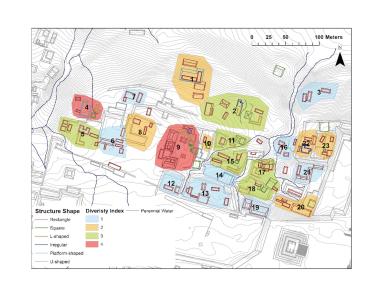"City Life at Classic Maya Palenque, Mexico" is a Collaborative Research project with primary funding from the National Endowment for the Humanities. Palenque, a UNESCO World Heritage Site in Chiapas, Mexico, is well-known for its important role in the decipherment of Maya hieroglyphic writing. Previous work there on the temples and residence of the ruling family have produced one of the best-understood case studies of the development of a Classic Maya state during the Late Classic Period (approximately 600-800 AD). Less is known about life outside of the precincts of the ruling family.
Through two excavation seasons and lab work, this project has described variation between households in a neighborhood of the city defined through settlement analysis. We have identified evidence of household-based multi-crafting including the production of fine stone ornaments from marble and jade, and working of imported obsidian, indications of consumption of luxuries not unlike the patterns seen in the ruling family compound and the largest household in the neighbor, once home to a sub-royal noble family. Notable differences in ritual practices exist. In the excavated households, we detected evidence of feasting and the use of ceramic figurines and musical instruments, suggesting ritual practices took place. But compared with the largest household in the neighborhood, which project collaborators explored in previous research, there is little evidence of mortuary practices, suggesting neighborhood burials may have been centralized in the area of the noble family, a practice consistent with our understanding of social structure as a House society.






